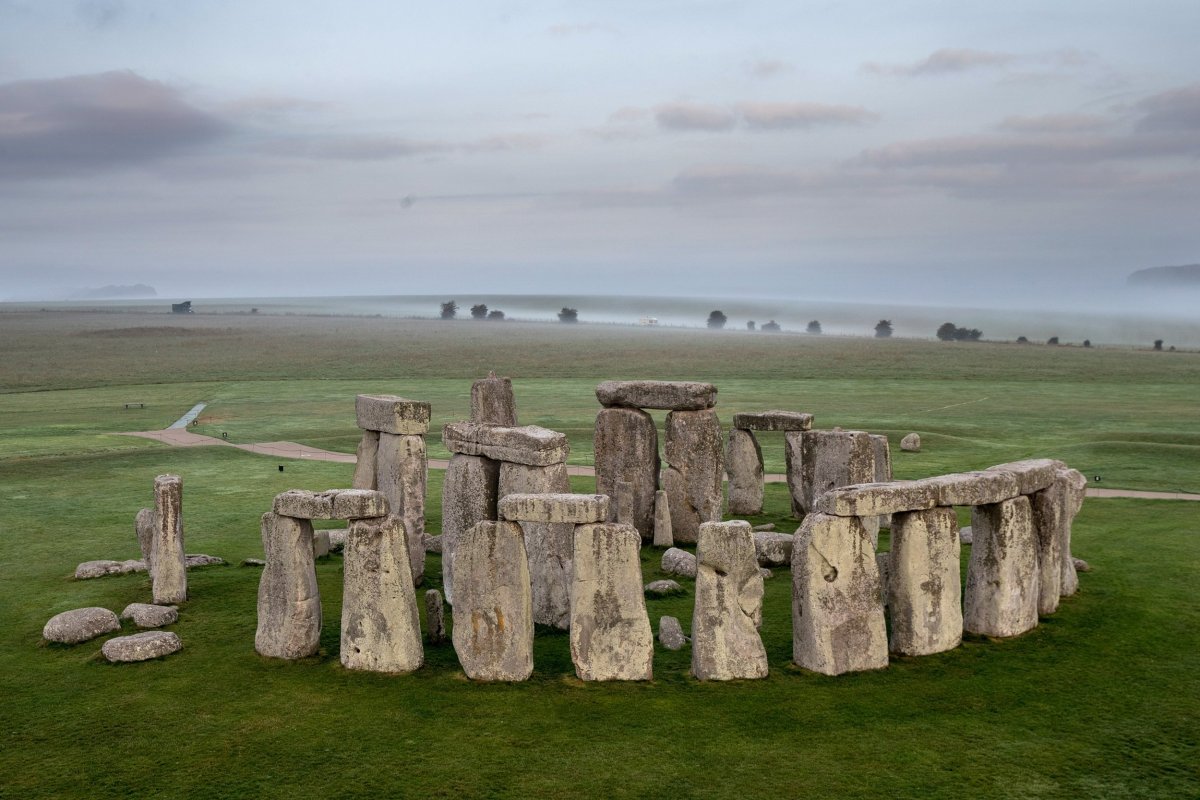Scientists have found evidence of huge feasts taking place at Stonehenge and other nearby Neolithic sites, with attendees from all over Britain bringing their own pigs to the party.
Researchers led by Richard Madgwick, from the U.K.'s Cardiff University, analyzed ancient pig bones and teeth found at four archaeological sites in southern Britain—Durrington Walls, Marden, Mount Pleasant and West Kennet Palisade. These include the monuments of Stonehenge and Avebury—two huge stone circles built around 5,000 years ago.
The team was hoping to find out where these pigs came from in order to establish the distances travelled by Neolithic people living in Britain at the time.
The findings, published in Science Advances, came as a surprise. Isotope analysis revealed the pigs had been carted hundreds of miles, with the animals having been raised at locations like Scotland, West Wales and North East England. Considering pigs are difficult to transport long distances, the team believes they must have been brought for the purpose of a ritual feast, with importance placed on attendees contributing pigs from their homeland.
Based on dental analysis of teeth found at one of the sites, the pigs appeared to have been slaughtered during their first winter—suggesting the feasts could have been related to mid-winter festivals, like the winter solstice.
"I think people were coming down and spending more than just a single night for the winter solstice," Madgwick told Newsweek. "[They] were investing their time in the day in assisting with the construction of the [monuments]... and at night partying hard."
He said the scale of the feast indicates it was not a one-off event. "I can't say whether it was annual or not, but certainly people are periodically coming back at this same time of year and engaging in big feasting events," he said. "These aren't small numbers of people coming… or one very big event. It's somewhere in between. Lots of big events over a relatively short period."
Stonehenge and other nearby henge sites are known to have been centers where Neolithic people gathered for ritual events. It is also known that feasting was an important part of society at the time. What was not known was the extent to which people would have traveled to visit these sites—and how connected Britain and its Neolithic population was.
The bone and tooth analysis, which was done in collaboration with scientists at the British Geological Survey, has shown just how far people were moving around the country for cultural events.
But how did people spread the word about these parties? And how did they know to bring pigs? "Word of mouth," Madgwick said. "We underestimate the degree to which people would have had broader knowledge and would have had connectivity in terms of information and movement in the past.
"Stonehenge had been a significant place for hundreds of years by the time of these feasts [around 4,500 years ago]. They would've known about that. It would have been a place of pilgrimage. It would have been well known across the country."

In terms of the significance of the pigs, he said that this is the only period of prehistory or modern times where pigs were the number one domesticate: "They are always a distant third to cattle and sheep in whichever order. Pigs are important at this time and I think that this is because it is an age of feasting where wealth and social relations and economic relations are all dictated by feasting and pigs are the perfect animal. They gain weight rapidly, you can have large litters. You don't milk them or shear them, so you can kill large numbers in one go without harming other elements of your economy."
Next, the researchers hope to look at Neolithic sites in other parts of Britain to look for other large feasts. They also hope to get a better understanding of exactly where the pigs were coming from to see just how far these people were travelling.
Penny Bickle, an archaeologist at the U.K.'s University of York, who was not involved in the study, told Newsweek that the findings provide a "powerful new insights into life in Britain at the time of Stonehenge."
She continued: "What is truly astonishing are the implications for the geographical range of human connections at this time. During the Late Neolithic, a type of pottery called Grooved ware is found throughout Britain and Ireland, but it has regional variations. Therefore, archaeologists could not be sure whether Grooved ware represented widespread connections and exchange, or had been passed on region to region. The transport of the bluestones from west Wales to Stonehenge hinted that human groups were travelling large distances, but this paper establishes that this was almost certainly the case."
Bickle said that questions still remain—for example, where exactly they came from and how were they moved—but the results show that substantial efforts were being made during the Late Neolithic to create these huge feasting events, and that people from all over the country contributed.
Uncommon Knowledge
Newsweek is committed to challenging conventional wisdom and finding connections in the search for common ground.
Newsweek is committed to challenging conventional wisdom and finding connections in the search for common ground.
About the writer
Hannah Osborne is Nesweek's Science Editor, based in London, UK. Hannah joined Newsweek in 2017 from IBTimes UK. She is ... Read more
To read how Newsweek uses AI as a newsroom tool, Click here.








